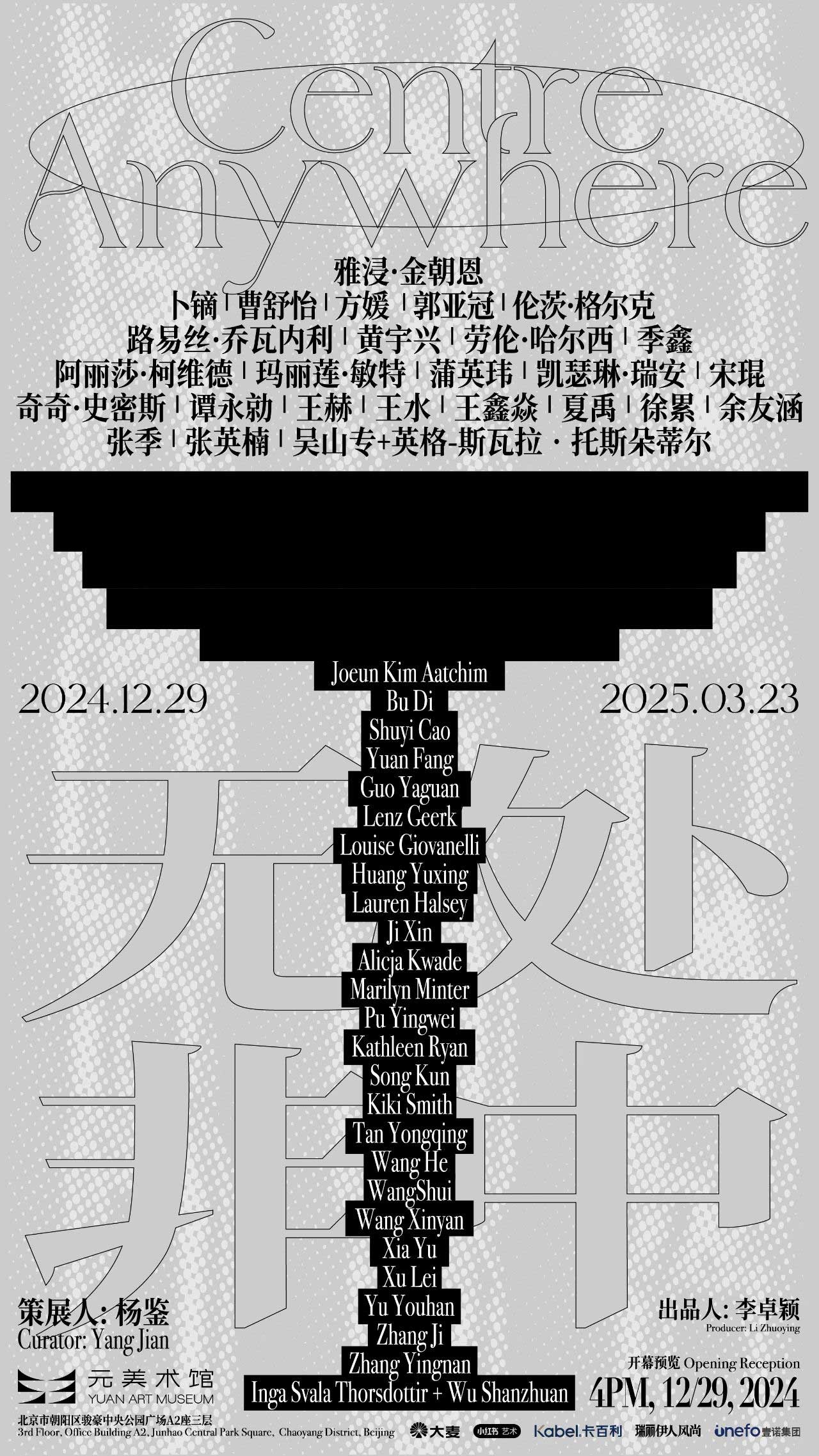Yuan Art Museum is pleased to present the group exhibition entitled “Centre Anywhere” curated byYang Jian.
The phrase‘centre anywhere’derives from a quote in Ming missionary Giulio Aleni’s Zhifang Waiji:
“Since the earth is a globe, there is nowhere that is not the centre; what is known as the east, west, south, and north is only a definition of where people live, without any fixed parameters in the beginning.”Meaning that the earth is round, so there is no place in the world that cannot be defined as the centre. Throughout history, ancient civilisations as established as China, Egypt, India, and Mesopotamia have all defined their realms as the‘centre’(as in the centre of the world) on the axis of their domicile, and the notion of‘the earth as a globe’and its underlying metaphor and implications for modern civilisation have certainly undermined the foundations of such narratives and prompted questions about the superiority of one’s own geographic location and cultural paradigm.
By now, obstinately insisting on one’s own culture to be the only rational and appropriate one and proclaiming its superiority have gradually become a nationalistic cultural governance strategy, and the‘centre’has become an obstacle waiting to be overcome. However, in an introspective view, we are reminded that the‘superiority of geographic location/cultural paradigm’resulting by the uniqueness of Chinese culture does not draw a clear boundary, as the West does between the‘I’and the‘other’. The terms yidi and huaxia are more like a pair of neutral descriptive concepts than the issues of race and discrimination encountered in modern Western history. Thus, although both are self-centred, the Chinese‘centre’prefers concentric circles with blurred boundaries radiating from the centre to the surroundings, incorporating the‘other’into its system, and‘appreciating and cherishing each other’s culture’.
Rather than becoming a shared world promised by the vision of globalisation, the world today is almost approaching a‘failed one’. Globalisation appears to have played the role of a gravedigger in the development of modernity, or at least to have plunged it into its self-inflicted chaos and lost its future, especially since globalisation has provided a clear orientation to the cultural strategies of modern imperialist domination of the world, leaving the world in a state of disorder. While catastrophic, this also becomes a time to create new rules. This exhibition juxtaposes contemporary Chinese art from around 1985 to the present with Western artists and experiences that reflect the extensive embrace of Chinese aesthetics to create a universalist aesthetic context departing from China and transcending the discussion of cultural identity, ethnicity, self-consciousness, and cosmopolitanism. This exhibition attempts to experiment with a cross-subjective art scene of reciprocity between different civilisations through the integration of physical space and curatorial language, thus creating a cross-subjective exhibition structure in which there is both the“I”and the“other”are present. In the underlying viewing discourse of the current Chinese and cultural landscape in which the exhibition takes place, the co-existence between the artists and works of different cultural backgrounds is signified, while glimpsing and revealing the possibilities of endless growth between different cultures.

